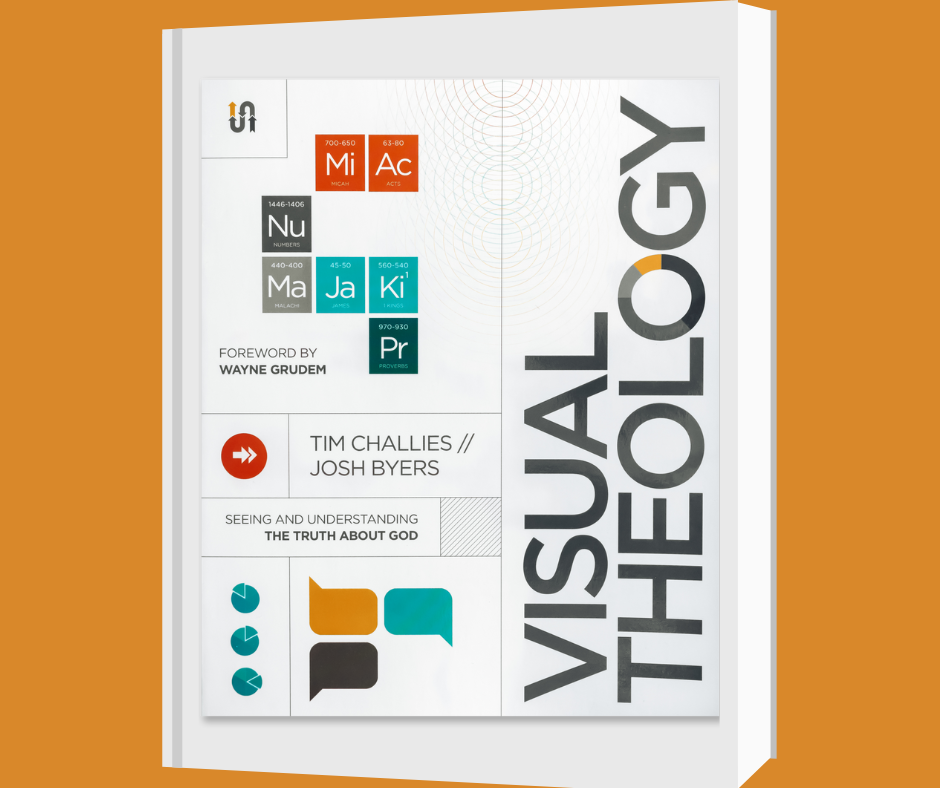Book Reviews
Visual Theology: Seeing and Understanding the Truth about God, by Tim Challies and Josh Byers | Review by Rosa Byler

To many people, the word theology suggests a highbrow intellectual pursuit whose usefulness is limited to preachers or full-time scholars. While it is a branch of academic learning taught in seminaries, schools of divinity, and some universities, its simple definition (“the study of God and of God’s relation to the world [Merriam-Webster]”) gives it a much broader application.
Pastor/writer Tim Challies, concerned about the lack of right doctrine and right living among Christians, joined pastor/artist Josh Byers to help readers “see” theological truth. The result of their work, Visual Theology, is a simply-written book connecting doctrinal concepts to colorful “infographics.”
No theology book of only 155 pages could be more than a primer, and Visual Theology is not intended as a complete systematic. The material focuses mainly on Jesus and what it means to follow Him, although Challies manages to touch lightly on the central doctrines of God, man, sin, faith, repentance, etc. The book is divided into four sections that examine growing in our relationship to Jesus, understanding His work, becoming like Him, and living for Him.
Christianity as a relationship is a concept that has been misrepresented and abused, yet Challies states that cultivating our relationship to Christ is the Christian’s “first and most basic discipline (13).” Beginning with the gospel and progressing to our new identity in Christ, he presents Bible reading and prayer as the two most basic disciplines of the Christian life (and our means of the communication so essential to any relationship).
Understanding the work of Christ requires seeing the whole of Scripture as one story, which Challies depicts as a four-part drama: creation, fall, redemption, and new creation. A better understanding of that story will lead us naturally to the study of the right doctrine. Far from being divisive, as some Christians fear, right theology will lead us to love, humility, healthy growth, obedience, worship, and unity (83).
How do we become like Christ? The Bible teaches a two-part process: putting off and putting on. One of the book’s strengths is this section’s emphasis on the seriousness of sin and the necessity of putting off sinful practices and behaviors. It is impossible to replace these with “clothes that mark [us] as Christians (117)” except through spiritual awakening and repentance.
Learning to live like Jesus will be a lifetime pursuit, involving not only vocation but relationships and stewardship. Challies argues against the idea of “spiritual” and “nonspiritual” occupations: God is “genuinely present and active” through his people, and that includes not only preaching but hauling trash or folding laundry (121). Living as ambassadors of reconciliation means “building, maintaining, and repairing” relationships with others. The Bible pays particular attention to relationships involving aspects of authority and submission (129), and godly servant leadership is quite different than the self-serving power that most people envision.
Not everyone will find infographics a compelling method of instruction. I was at least a third of the way into the book before I realized I wasn’t even seeing the diagrams; however, the text is readable and informative enough to stand on its own. Its focus on the Christian life makes it an excellent resource for young Christians as well as anyone who wishes to broaden his understanding of sanctification.
As with any book, minor eyebrow-raisers surface. Challies wears a visible symbol of his marriage covenant (not an obvious point, but mentioned in passing) and his comments on election are from the Reformed perspective (again, not belabored or actively taught. And while several phrases do suggest the shadier peripheries of “eternal security,” Challies’ stern and uncompromising position on sin in the Christian’s life leaves no doubt that this is not his intent.)